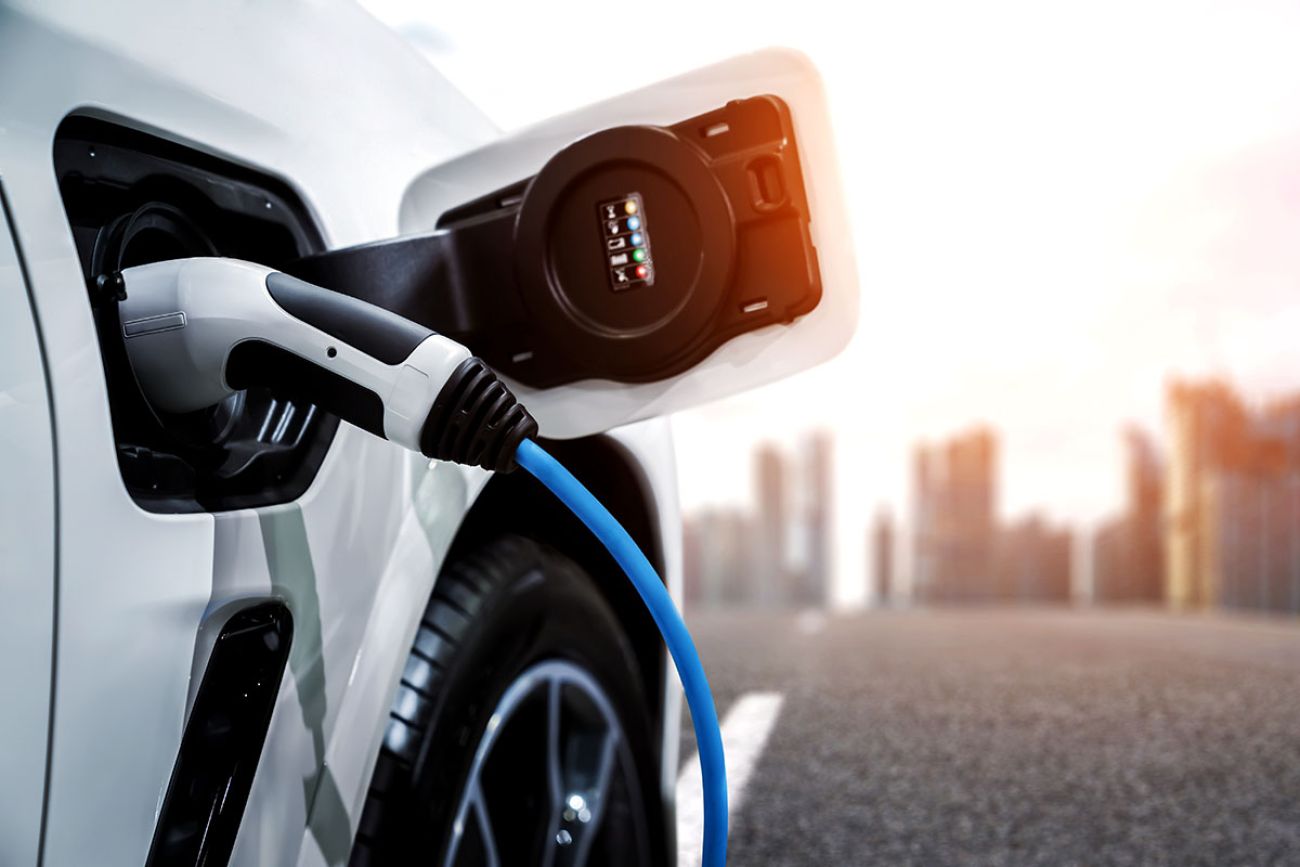5 (mostly) good things to know about Michigan’s progress on EVs

- Michigan is scoring electric vehicle manufacturing wins as several large-scale projects choose the state for production
- Funding for the projects is coming, in part, from state incentives
- But much remains in flux for EVs, including consumer demand and how many Michigan auto suppliers will participate in the growth
Michigan officials this month celebrated Ford Motor Co.’s decision to build a $3.5 billion electric vehicle battery plant in Marshall, a move expected to turn rural farmland into a massive factory employing about 2,500 when it opens in 2026.
The move is the latest among several involving EV production since January 2022, when state Democrats and Republicans mobilized around creating a $1.6 billion state incentive program for large-scale projects as well as a more aggressive strategy to bring the projects to Michigan.
The move appears to have come at the right time: EV battery investment topped $73.6 billion in 2022, up from about $25 billion a year earlier, according to data from the Chicago Federal Reserve. The increase underscores the urgency of automakers to ramp up EV production and move the vehicles’ critical supply chains to the U.S.
Related:
- Marshall megasite wins Ford EV battery plant project with Chinese partner
- Ford EV battery plant on Marshall Michigan megasite gets $1B in incentives
- Ford’s $2B investment in Michigan ‘solidifies’ state’s auto production
At the same time, the industry faces infrastructure challenges and ongoing consumer doubts that the vehicles — often sold at a higher price than gas-powered autos — will be reliable substitutes.
All of that leaves questions for the state as its manufacturing sector — from automakers to all of their suppliers — eyes the expected dramatic shift to EV production.
Here are five things to know about EVs in Michigan today:
1. Total corporate investment is growing
The Ford factory in Marshall, which is expected to open in 2026, will join several major EV and battery investments in Michigan since fall 2021. They include:
- General Motors battery plant in Delta Township, valued at $2.5 billion and expecting up to 1,700 workers when it opens in 2025.
- GM retooling and expansion of its Lake Orion assembly plant, valued at $4 billion, to produce two EV pickups by 2024, employing about 2,350 new workers.
- Our Next Energy (ONE) battery factory in Van Buren Township, valued at $1.6 billion.
- Gotion battery factory valued at $2.36 billion facility near Big Rapids in Mecosta County, expected to create 2,350 jobs.
- LG Chem in the Holland area, spending up to $1.7 billion to expand its battery pack factory.
Combined, those projects total $15.6 billion in investment.
That’s important for the state and its auto-related industries, said Glenn Stevens, executive director of MICHAuto, a mobility division of the Detroit Regional Chamber.
From economic development and workforce perspectives, Stevens said, Michigan is “on the forefront of a significant growth part of the (auto) industry.”
Manufacturing batteries — essentially the “fuel tank” of the EV — in Michigan means other aspects of electric vehicle production likely will be located here, Stevens said.
EV business attraction also goes beyond batteries. For example, Canadian electric vehicle charging network operator FLO announced in 2022 that it plans a $3 million U.S. manufacturing facility in Auburn Hills. And Graphex Technologies expects to open a $75 million graphite processing plant in Warren. The material is used in lithium iron battery anodes.
2. State investment — in the form of incentives, like tax breaks and grants — also is growing
The projects approved in 2022 received over $2.1 billion in state incentives, as Michigan awards tax-free status through so-called Renaissance Zones, workforce development grants and performance grants for follow-through on job creation estimates.
Michigan also is using its new Strategic Outreach and Attraction Reserve (SOAR) fund, approved in December 2021, to fund large-scale projects that the state calls “transformative.” SOAR funding reached $1.6 billion in 2022, and officials still are considering how it could be a self-funded program through the awards it makes.
More recently, on Wednesday the Michigan Economic Development Corporation discussed the Ford project, now called Ford Blue Oval Michigan, with legislators on Michigan’s House Appropriations Committee. The state awarded it about $1 billion in incentives and now is asking for an additional $750 million from the Strategic Site Readiness portion of the SOAR Fund, which will require legislative approval.
3. Michigan’s EV charging network needs to catch up
The state is investing in adding charging stations, including $110 million in federal funding through the National Electric Vehicle Infrastructure Formula Program created as part of the Bipartisan Infrastructure Law in 2022 to boost places where drivers can charge their vehicles on the road.
The federal funding, combined with state programs such as Charge Up Michigan and the Lake Michigan Circuit, are expected to create the infrastructure to support 2 million EVs on Michigan roads by 2030, the state says.
However, Michigan appears to be behind other states when it comes to charging stations, according to a report released in January by Anderson Economic Group of East Lansing.
The researchers found that:
- DC fast charging stations, which take about 30 minutes for a full charge, are concentrated in the lower half of the Lower Peninsula.
- Most of the stations are in the urban areas of Detroit, Ann Arbor, Lansing, Grand Rapids, and Kalamazoo.
- Few fast charging stations are found in the upper half of the Lower Peninsula.
- Only 8 DC fast charging stations are in the Upper Peninsula.
4. Michigan is increasing focus on adding more automotive suppliers to EV supply chain
The Michigan Manufacturers Association will meet with Gov. Gretchen Whitmer’s administration in early March to form a strategy that will encourage Michigan’s automotive suppliers to consider making products for EVs.
“We are doing really well with (large projects),” John Walsh, president and CEO of the MMA told Bridge. “Next is getting a supply chain running all the way down to the smallest widget maker.”
The effort has a big implication for the state: 96 of the top 100 automotive suppliers to North America have a presence in Michigan, according to the Detroit Regional Chamber, while dozens are headquartered in Michigan. Yet an EV has far fewer parts: For example, a drivetrain in a gas-fueled vehicle may contain more than 2,000 moving parts, compared to an EV’s 20.
Choices will need to be made by manufacturers, like tool and die makers, about their product lines. Some may continue to make parts for a gas-fueled vehicle, including for the military, but others may find other opportunities in EVs or non-automotive industries, Walsh said.
5. The consumer remains a wild card
Are Americans ready to buy and drive EVs at the pace that automakers are ramping up to build them?
The answer is unclear.
Some projections after the federal Inflation Reduction Act said EVs could be just over half of the new vehicle market by 2030. GM said it wants to be fully electric by 2035, and Ford is saying half of its production could be electric by 2030.
But so far, EV market share is now at 5 percent in 2022, up from 3 percent in 2021. Despite the growth, North American auto executives say they now project EVs will have 35 percent of the market by 2030, down from 52 percent in 2021, according to a survey by global accounting firm KPMG.
Meanwhile, so-called “range anxiety” is a real issue for buyers, who may not fully feel comfortable yet driving distances that may require a charge.
So is price, said David Gohlke, a researcher at Argonne National Laboratory, a research center for the U.S. Department of Energy, during a presentation on EVs in Detroit organized by the Chicago Federal Reserve.
More efficient technologies often have higher upfront costs, Gohlke said.
That’s true for Ford’s F-150 versus its EV version, the F-150 Lightning. The base model of the gas-powered version costs $33,695, compared to $55,974 for the EV version. The difference on a 60-month auto loan is about $438 per month.
Scaling up production of EVs may address some of the difference, Gohlke said, since as new technologies mature, costs tend to come down.
New federal incentives and subsidies for EV purchases starting this year also may help equalize the cost decision for consumers. The Inflation Reduction Act set new tax credits for vehicles built in North America and fitting other IRS guidelines, making some purchases up to $7,500 less expensive to a buyer.
Business Watch
Covering the intersection of business and policy, and informing Michigan employers and workers on the long road back from coronavirus.
- About Business Watch
- Subscribe
- Share tips and questions with Bridge Business Editor Paula Gardner
Thanks to our Business Watch sponsors.
Support Bridge's nonprofit civic journalism. Donate today.
See what new members are saying about why they donated to Bridge Michigan:
- “In order for this information to be accurate and unbiased it must be underwritten by its readers, not by special interests.” - Larry S.
- “Not many other media sources report on the topics Bridge does.” - Susan B.
- “Your journalism is outstanding and rare these days.” - Mark S.
If you want to ensure the future of nonpartisan, nonprofit Michigan journalism, please become a member today. You, too, will be asked why you donated and maybe we'll feature your quote next time!




